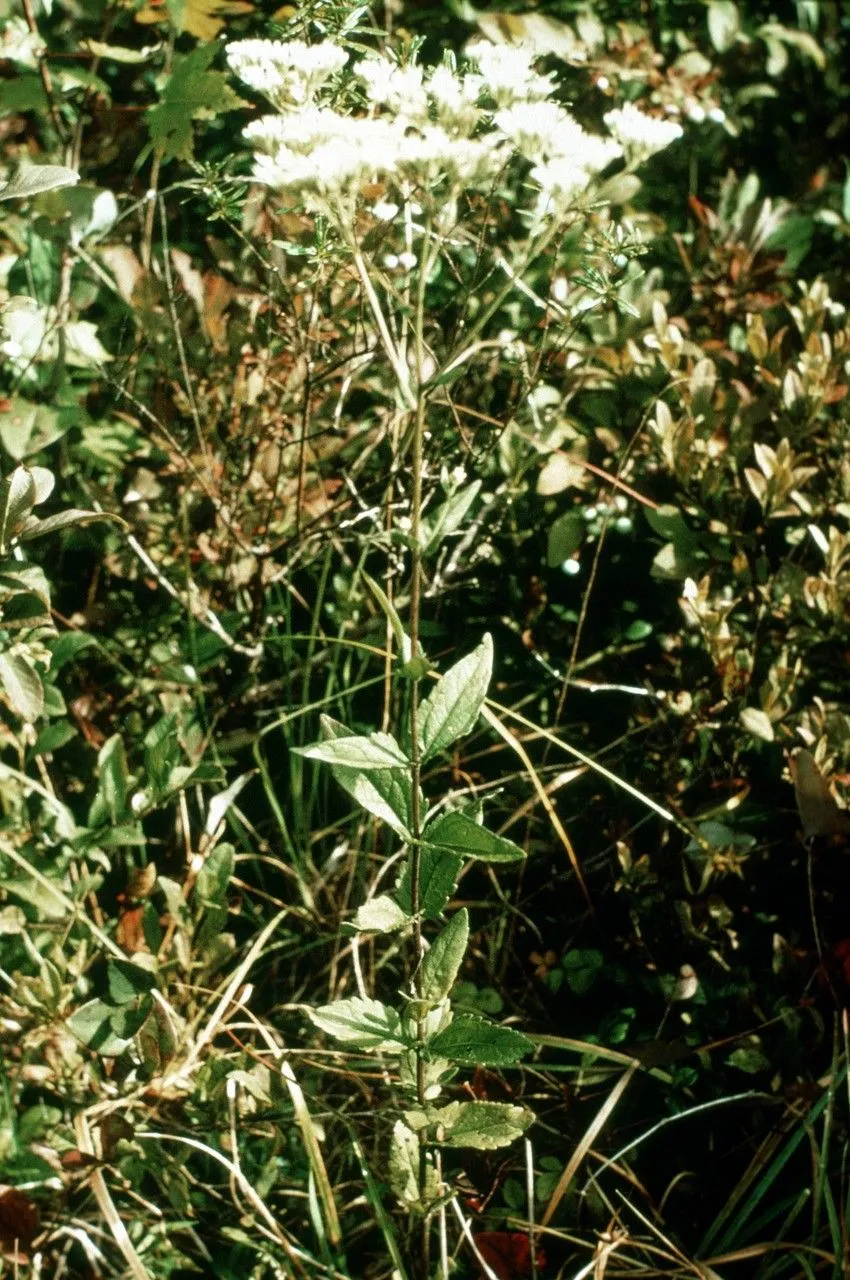
Author: Walter
Bibliography: Fl. Carol.: 199 (1788)
Year: 1788
Status: accepted
Rank: species
Genus: Eupatorium
Vegetable: False
Observations: E. U.S.A.
Rough boneset, scientifically known as Eupatorium pilosum, is a notable species within the Asteraceae family. Described in 1788 by the botanist Walter in his work Fl. Carol.: 199, this plant is an intriguing member of the flora predominantly found in the eastern regions of the United States.
Eupatorium pilosum typically thrives in moist, open habitats such as marshes, wet meadows, and the edges of streams and ponds. This habitat preference ensures that the plant is commonly encountered in a variety of wetland environments across its range.
Characterized by its distinctive hairy stems and leaves, rough boneset possesses a robust structure. The leaves are often arranged oppositely on the stem, exhibiting a lanceolate shape with serrated margins, and are densely covered in fine hairs, giving the plant its “rough” texture. The plant can grow to a notable height, often reaching up to several feet tall, making it a prominent feature in its native habitats.
During the blooming period, rough boneset produces clusters of small, white flowers that are visually appealing and often form dense, flat-topped clusters, attracting a plethora of pollinators including various species of bees and butterflies. This not only adds to the plant’s ecological value but also highlights its role in supporting biodiversity within its native range.
The common name “boneset” originates from the traditional use of plants in this genus by Native Americans and early European settlers, who believed infusions made from the leaves could treat ailments such as fevers and breakbones fever, also known as dengue. Although modern medicine has superseded these practices, the historical significance remains an interesting chapter in the ethnobotanical appreciation of the species.
In conclusion, Eupatorium pilosum, or rough boneset, is a fascinating specimen within the Asteraceae family, known for its hairy appearance and clusters of white flowers. Its presence in the eastern United States’ moist environments underscores its role in local ecosystems and its historical medicinal use adds a layer of cultural heritage.
Eng: rough boneset
En: Rough boneset
Taken Mar 8, 2022 by Gonçalves Teresa (cc-by-sa)
Taken Sep 7, 2019 by dana dana feldman (cc-by-sa)
Taken Sep 7, 2019 by dana dana feldman (cc-by-sa)
Taken Jul 29, 2006 by EOL − Darel Hess (cc-by-nc-sa)
Taken Jul 29, 2006 by EOL − Darel Hess (cc-by-nc-sa)
Taken Jan 1, 1900 by EOL − WVU Herbarium (cc-by-nc-sa)
Taken Jul 29, 2006 by EOL − Darel Hess (cc-by-nc-sa)
© copyright of the Board of Trustees of the Royal Botanic Gardens, Kew.
Growth habit>: Forb/herb
Family: Myrtaceae Author: (F.Muell.) K.D.Hill & L.A.S.Johnson Bibliography: Telopea 6: 402 (1995) Year: 1995 Status:…
Family: Rubiaceae Author: Pierre ex A.Froehner Bibliography: Notizbl. Bot. Gart. Berlin-Dahlem 1: 237 (1897) Year:…
Family: Sapindaceae Author: Koidz. Bibliography: J. Coll. Sci. Imp. Univ. Tokyo 32(1): 38 (1911) Year:…
Family: Asteraceae Author: A.Gray Bibliography: Pacif. Railr. Rep.: 107 (1857) Year: 1857 Status: accepted Rank:…
Family: Fabaceae Author: Medik. Bibliography: Vorles. Churpfälz. Phys.-Ökon. Ges. 2: 398 (1787) Year: 1787 Status:…
Family: Aspleniaceae Author: (Cav.) Alston Bibliography: Bull. Misc. Inform. Kew 1932: 309 (1932) Year: 1932…